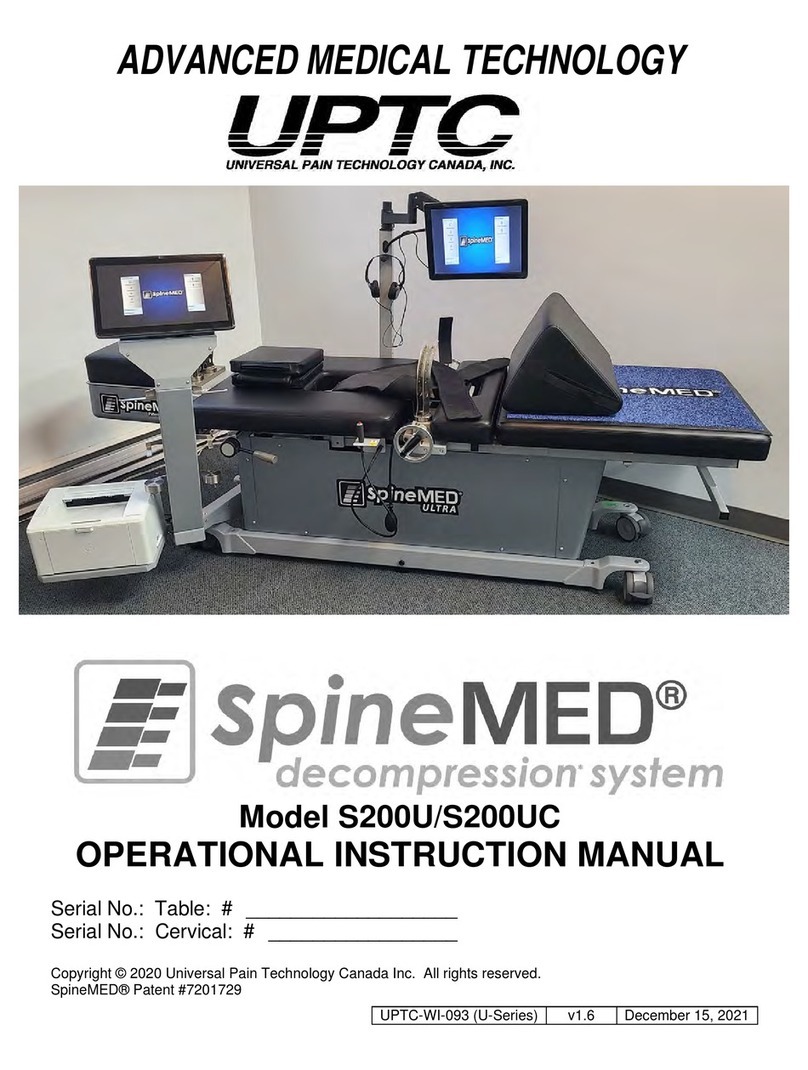
WI-065 v1.7 iii
4. Lumbar & Cervical Procedure Screens............................................................................................46
4.1 Lumbar Procedure Screen ..................................................................................................46
4.2 Cervical Procedure Screen .................................................................................................52
4.3 Reports Menu Screen..........................................................................................................58
4.4 Selecting Patient Data.........................................................................................................58
4.5 Report Options ....................................................................................................................60
5. Procedure Session .............................................................................................................................65
5.1 Review of Individual Modalities of Each Session................................................................65
5.2 Data Entry for Lumbar Session ...........................................................................................65
5.3 Data Entry for Cervical Session ..........................................................................................67
5.4 Instructions and Sequencing for Patient Set-up for Lumbar Session .................................67
5.5 Instructions and Sequencing for Patient Set-up for Cervical Session.................................72
6. Therapeutic Operational Guidelines.................................................................................................75
6.1 Outcome Measure Data Entry.............................................................................................75
7. Precautions .........................................................................................................................................75
7.1 Precautions for SpineMED® Procedure..............................................................................75
7.2 Precautions for Use of SpineMED® System.......................................................................76
7.3 Degree of Protection Against Harmful Ingress of Liquids: IPX0 (ordinary equipment)......76
7.4 Environmental Conditions for the Operation, Storage and Transport of the SpineMED®..77
8. Maintenance........................................................................................................................................77
8.1 Disposal of SpineMED® System.........................................................................................77
8.2 Regular Maintenance ..........................................................................................................77
8.3 Cleaning of Equipment........................................................................................................77
8.4 Service and Warranty..........................................................................................................78
8.5 Troubleshooting...................................................................................................................79
8.6 Power Troubleshooting and Fuse Replacement.................................................................80
9. Technical Specifications....................................................................................................................84
9.1 Power Supply ......................................................................................................................84
9.2 Dimensions and Weight.......................................................................................................85
9.3 Model Number Designation.................................................................................................85
9.4 Type B Applied Parts...........................................................................................................85
9.5 Compliance Standards........................................................................................................85
10. Manufacturer.......................................................................................................................................89
10.1 Contact Information.............................................................................................................89
10.2 European Union Authorized Representative.......................................................................90
10.3 United States Authorized Representative ...........................................................................90
10.4 Product Serial Label Example.............................................................................................90
APPENDIX..........................................................................................................................................................91
Device Classification........................................................................................................................91
Definition of Symbols.......................................................................................................................91
Warranty Certificate.........................................................................................................................92
4.5.1 Session Report..............................................................................................................60
4.5.2 Daily Progress Report...................................................................................................61
4.5.3 Patient Full Report.........................................................................................................63
4.5.4 Procedure Report..........................................................................................................64
8.6.1 Power Troubleshooting .................................................................................................80
8.6.2 Fuse Inspection.............................................................................................................83
9.5.1 Electromagnetic Standards EN 60601-1-2 2007 ..........................................................86
9.5.2 Electromagnetic Environment Guidance.......................................................................87
9.5.3 Compliance Standards Met...........................................................................................89




























